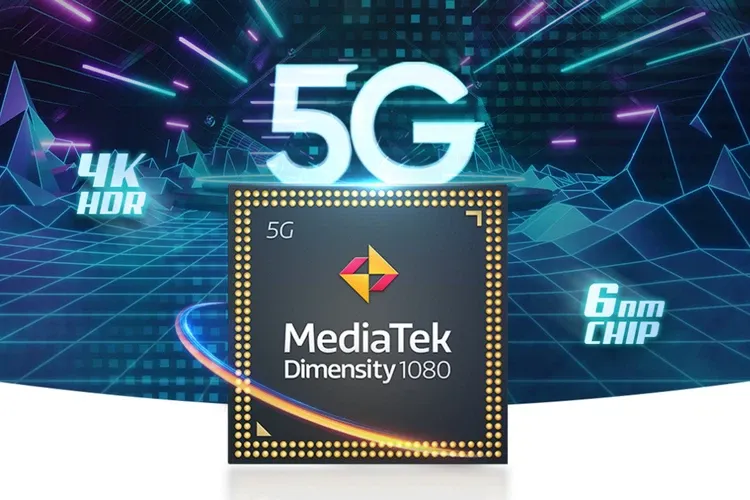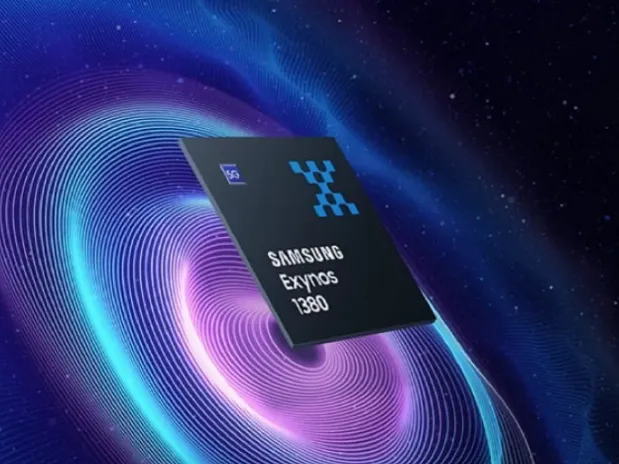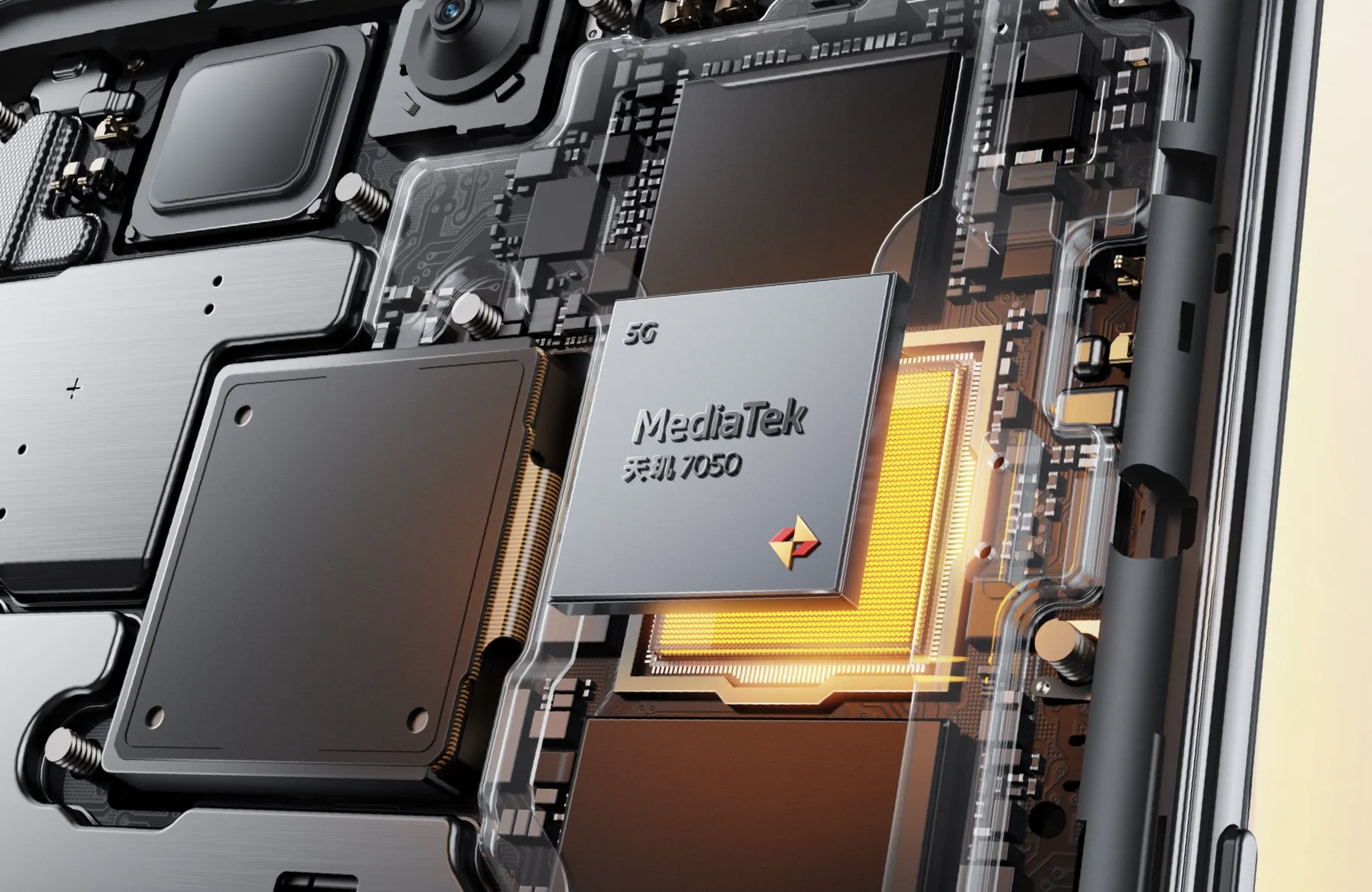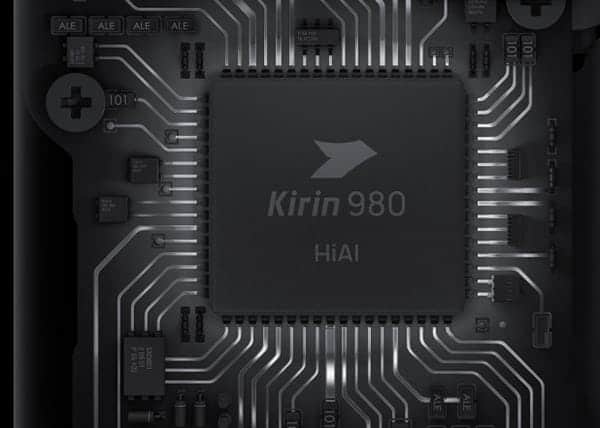5 Chipsets Equivalent to Dimensity 7030
In September 2023, MediaTek introduced Dimensity 7030 chipset. This new addition stands out as a powerful gaming chip in the mid-range market. It doesn't just excel in performance; Dimensity 7030 also has impressive power efficiency, so the battery lasts longer during demanding tasks like multitasking and gaming.
It is built using TSMC's 6 nm process and features eight CPU cores. This includes two Cortex A78 cores at 2.5 GHz for top performance and six Cortex A55 cores at 2 GHz for enhanced efficiency. Additionally, it's equipped with a Mali G610 MP3 GPU running at 1000 MHz to enhance its graphics capabilities.
A key highlight of this chipset is its speed, particularly in 5G connectivity. It efficiently switches between the broader coverage of sub-6GHz and the high-speed mmWave connections. Remarkably, it can simultaneously connect to both FR1 and FR2 bands boosting its speed by up to 53% compared to alternatives limited to 4G LTE and mmWave.
In terms of multimedia, the chipset supports up to 2520 x 1080 screen resolution and a 144 Hz refresh rate. It also caters to high-quality photography, supporting 108 MP cameras and 4K 30 fps video recording. Alongside its 5G prowess, it includes WiFi 6e, Bluetooth 5.2, and LPDDR5 support to ensure swift data transfers.
The Dimensity 7030 made its debut in the Motorola Edge 40 Neo, first released in Europe and India in September 2023. This device, the first in the world powered by the Dimensity 7030, has shown impressive capabilities in synthetic tests.
According to Nanoreview, it scored up to 527,155 points in AnTuTu v10 and achieved 1061 in single-core and 2536 in multi-core performance in GeekBench 6.
Now, you might be curious about which chipsets can match the Dimensity 7030's capabilities. There are five chipsets that are generally considered to be on par with it.
It's important to note, though, that the five chipsets we're about to discuss aren't exactly identical to the Dimensity 7030. Nonetheless, they offer performance levels that are comparable or within the same range. Let's take a look at these five chipsets that stand alongside the Dimensity 7030.
1. Dimensity 1080

The first chipset comparable to the Dimensity 7030 is MediaTek's own Dimensity 1080. These two chipsets share several similarities. The Dimensity 1080 also utilizes a 6 nm fabrication process and is equipped with eight CPU cores.
This includes two Cortex A78 cores at 2.6 GHz and six Cortex A55 cores at 2 GHz. For graphics, it uses the Mali G68 MP4 GPU, which runs at 800 MHz.
The Dimensity 1080 matches the 7030 in several areas. It supports LPDDR5 RAM, offers a screen resolution of 2520 x 1080 pixels, and can handle 4K video recording at 30 fps. One notable difference is its support for higher camera resolutions, up to 200 MP.
Several mid-range smartphones have adopted the Dimensity 1080, including the realme 10 Pro Plus, Samsung Galaxy A34 5G, Xiaomi Redmi Note 12 Pro 5G, Redmi Note 12 Pro Plus 5G, and Redmi Note 12 Explorer.
Performance-wise, according to Nanoreview, the Dimensity 1080 achieves an AnTuTu v10 score of up to 534,929 points. In GeekBench 6, it scores 966 for single-core and 2423 for multi-core. Let's compare the Dimensity 1080 with the Dimensity 7030.
Advantages of the Dimensity 1080 over the Dimensity 7030:
- Achieves a higher AnTuTu score (534,929 vs 527,155).
- Offers a higher CPU frequency (2.6 GHz vs 2.5 GHz).
- Supports a higher camera resolution (200 MP vs 108 MP).
Disadvantages of the Dimensity 1080 compared to the Dimensity 7030:
- Lower scores in single-core and multi-core performance (966 vs 1061; 2423 vs 2536).
- Lower GPU frequency (800 MHz vs 1000 MHz).
2. Exynos 1380

Exynos 1380 is another chipset that matches the capabilities of the Dimensity 7030. It is built using a 5 nm fabrication process and includes eight CPU cores. The configuration features four Cortex A78 cores at 2.4 GHz and four Cortex A55 cores at 2 GHz. For graphics, it picks up a Mali G68 MP5 GPU with a 950 MHz frequency.
This chipset supports LPDDR5 RAM and UFS 3.1 for storage. In terms of multimedia, it can handle a screen resolution of 2960 x 1440 pixels, supports cameras up to 200 MP, and enables 4K video recording at 30 fps. The Exynos 1380 also offers 5G connectivity, with download speeds reaching up to 3790 Mbps.
Samsung's Galaxy A54 5G and Galaxy M54 5G are two phones that utilize the Exynos 1380 as their power source.
Based on information from Nanoreview, the Exynos 1380 has reached an AnTuTu v10 score of up to 586,746 points. In GeekBench 6 tests, it scored 1000 for single-core and 2766 for multi-core performance. Here's how the Exynos 1380 compares to the Dimensity 7030.
Advantages of the Exynos 1380 over the Dimensity 7030:
- Higher AnTuTu and multi-core scores (586,746 vs 527,155; 2766 vs 2536).
- More advanced fabrication process (5 nm vs 6 nm).
- Supports superior screen resolution and camera quality.
- Offers greater download speed (3790 Mbps vs 2770 Mbps).
Disadvantages of the Exynos 1380 compared to the Dimensity 7030:
- Lower score in single-core performance (1000 vs 1061).
- Slightly lower CPU and GPU frequencies (2.4 GHz vs 2.5 GHz; 950 MHz vs 1000 MHz).
3. Dimensity 7050

Continuing with MediaTek's offerings, the Dimensity 7050 is another chipset equivalent to the Dimensity 7030. It is built using a 6 nm process and features eight CPU cores, including two Cortex A78 cores at 2.6 GHz and six Cortex A55 cores at 2 GHz. The graphics are handled by a Mali G68 MP4 GPU, which operates at 800 MHz.
The Dimensity 7050 supports LPDDR5 RAM and 5G connectivity. In terms of multimedia, it can manage a screen resolution of up to 2520 x 1080 pixels, supports cameras with a resolution of up to 200 MP, and is capable of 4K video recording at 30 fps.
Several smartphones, including the realme 11 Pro, realme 11 Pro Plus, and OPPO Reno10 5G, are powered by the Dimensity 7050.
According to data from Nanoreview, the Dimensity 7050 scored up to 535,415 points in the AnTuTu v10 test. In GeekBench 6, it achieved a score of 962 for single-core and 2351 for multi-core performance. Let's compare the Dimensity 7050 with the Dimensity 7030.
Advantages of the Dimensity 7050 over the Dimensity 7030:
- Higher AnTuTu score (535,415 vs 527,155).
- Greater CPU frequency (2.6 GHz vs 2.5 GHz).
- Supports a higher camera resolution (200 MP vs 108 MP).
Disadvantages of the Dimensity 7050 compared to the Dimensity 7030:
- Lower performance in single-core and multi-core scores (962 vs 1061; 2351 vs 2536).
- Reduced GPU frequency (800 MHz vs 1000 MHz).
4. Snapdragon 778G

Moving on to Qualcomm's contribution, we have the Snapdragon 778G. This chipset is created using a 6 nm process and comprises eight CPU cores split into three clusters. The first cluster contains a single Cortex A78-based Kryo 670 Prime core operating at 2.4 GHz.
The second cluster has three Cortex A78-based Kryo 670 Gold cores at the same frequency, and the third cluster includes four Cortex A55-based Kryo 670 Silver cores at 1.8 GHz. Additionally, it features an Adreno 642 GPU with a frequency of 550 MHz.
The Snapdragon 778G is designed to work with LPDDR5 RAM and supports 5G connectivity. Impressively, it can achieve download speeds of up to 3700 Mbps. For multimedia, it supports screen resolutions up to 2520 x 1080 pixels, can handle camera resolutions up to 192 MP, and is capable of recording 4K videos at 30 fps.
The Snapdragon 778G is a popular choice for mid-range smartphones. It powers devices such as the POCO X5 Pro 5G, vivo T1 Pro 5G, Samsung Galaxy A52s 5G, Galaxy A73 5G, vivo V29 5G, and OPPO Reno10 Pro 5G.
According to Nanoreview, the Snapdragon 778G scored up to 603,338 points in the AnTuTu v10 benchmark. In GeekBench 6, it achieved 1022 for single-core and 2865 for multi-core performance. Here's how it compares to the Dimensity 7030.
Advantages of the Snapdragon 778G over the Dimensity 7030:
- Higher scores in AnTuTu and multi-core performance (603,338 vs 527,155; 2865 vs 2536).
- Supports a better camera resolution (192 MP vs 108 MP).
- Offers faster download speeds (3700 Mbps vs 2770 Mbps).
Disadvantages of the Snapdragon 778G compared to the Dimensity 7030:
- Lower single-core score (1022 vs 1061).
- Reduced CPU and GPU frequencies (2.4 GHz vs 2.5 GHz; 550 MHz vs 1000 MHz).
5. Kirin 980

Kirin 980 is another chipset comparable to the Dimensity 7030. Produced with a 7 nm process, it operates with eight CPU cores. This includes two Cortex A76 cores at 2.6 GHz, another two Cortex A76 cores at 1.92 GHz, and four Cortex A55 cores at 1.8 GHz. It also features a Mali G76 MP10 GPU, running at 720 MHz.
This chipset also supports LPDDR4x RAM, with a frequency of 2133 MHz. It accommodates screen resolutions up to 3120 x 1440 pixels, can handle a 48 MP camera, and is capable of recording 4K videos at 30 fps. However, it lacks 5G connectivity, limiting its download speed to 1400 Mbps.
This chipset powers several smartphones, including the Huawei nova 5T, Huawei P30, and Huawei P30 Pro.
According to Nanoreview, the Kirin 980 scored up to 583,392 points in AnTuTu v10. In GeekBench 6, it registered 836 for single-core and 2142 for multi-core performance. Let's compare the Kirin 980 with the Dimensity 7030.
Advantages of Kirin 980 over the Dimensity 7030:
- Higher AnTuTu score (583,392 vs 527,155).
- Higher CPU frequency (2.6 GHz vs 2.5 GHz).
- Supports a higher screen resolution.
Disadvantages of Kirin 980 compared to the Dimensity 7030:
- Lower scores in single-core and multi-core performance (836 vs 1061; 2142 vs 2536).
- Less advanced fabrication process (7 nm vs 6 nm).
- Reduced GPU frequency (720 MHz vs 1000 MHz).
- Only supports older RAM technology (LPDDR4x vs LPDDR5).
- Lacks support for higher camera resolutions and 5G connectivity.
These five chipsets are comparable to the Dimensity 7030, each with its own strengths and weaknesses, depending on their use.
However, the overall quality of a smartphone isn't solely determined by its chipset. Many other factors also contribute to its appeal and value. Which chipset do you think rivals the Dimensity 7030 most closely? Share your thoughts in the comments.
